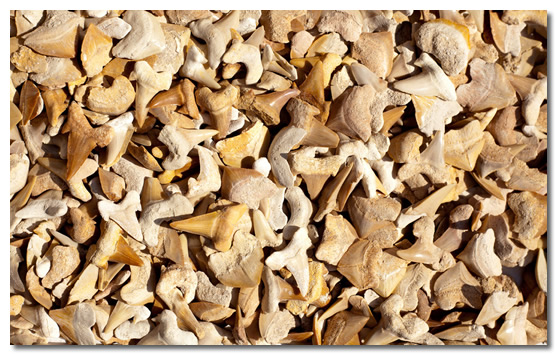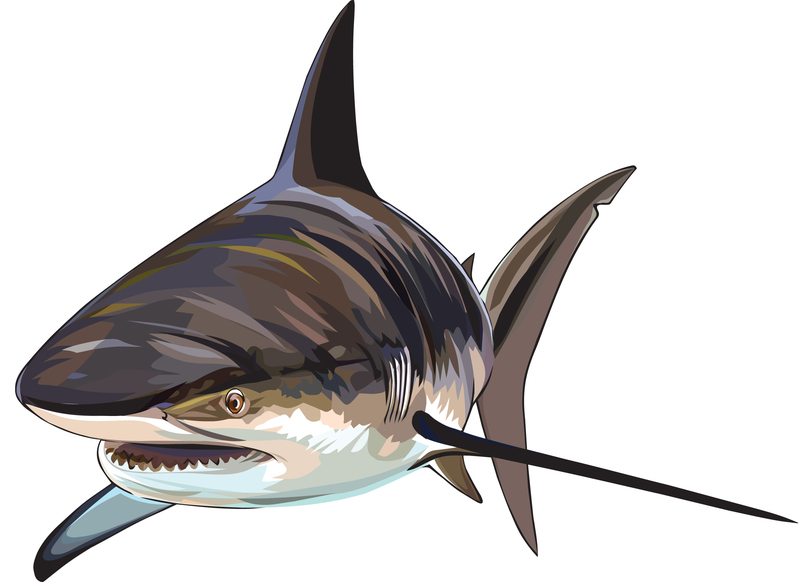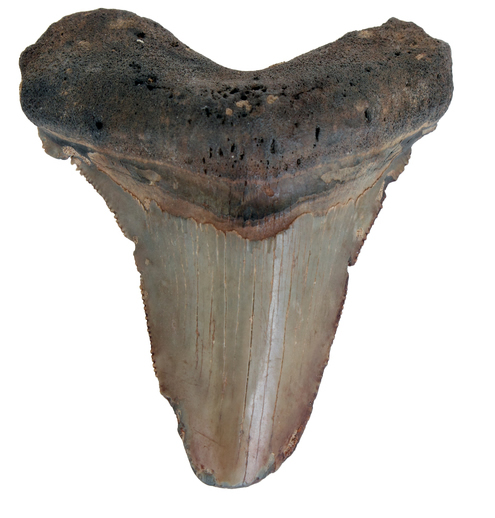The price of shark teeth can vary greatly depending on a number of different factors. You can find them readily sold for as little as .05 cents a piece or as much as $5,000 or more (yes, that’s THOUSANDS). If you plan on purchasing, selling or collecting shark teeth, it’s important that you understand what factors affect their value. Educating yourself on what to look for will allow you to make smarter purchases and prevent you from getting ripped off in your shark teeth hobby.

What To Look For When Purchasing Shark Teeth
Before dropping your hard-earned money on an attractive shark tooth, you should familiarize yourself with some of the factors which affect their value. There’s really not any risk involved with purchasing a handful of cheap shark teeth from a beach-side vendor, but when you start spending over $20 bucks or more on a single piece, it’s wise to know what to look for.
Here we’ll take a look at some of the various factors which are known to either raise or lower the selling price of shark teeth. Remember, though, a shark tooth or any relic for that matter is only worth what someone is willing to purchase it for. Just because someone is selling a tooth for $500 doesn’t mean it’s worth that much.
Species
As of 2012, there are over 400 different species of sharks inhabiting Earth’s oceans with more being discovered each year. With so many different types of sharks, it’s safe to say there are equally as many different types of teeth or possibly even more. Of course, this is also one of the aspects which makes collecting shark teeth an enjoyable and exciting hobby. Some people enjoy teeth from a mixture of species, while others focus on a single type.
Hands down, the rarest and most valuable shark teeth are from the now-extinct megalodon. This aquatic monster roamed Earth’s oceans for nearly 27 million years during the Cenozoic Era and is believed to have reached lengths of 52 feet. A large Megalodon shark tooth in excellent condition can sell for $5,000 or more to a serious collector. Due to the high value of megalodon teeth, many scuba divers actively search for them out of commercial interest.
Size
One of the most influential factors in the value of a shark tooth is its size. While there are always exceptions, a good rule of thumb is the larger the tooth, the more money it’s worth. Simply put, larger teeth are more rare and difficult to come by, which is why they’re worth more to collectors. In addition, large teeth are more vulnerable to succumbing to damage and erosion over time, which can also affect their value.
Reaching over 40 feet in length and 40,000 lbs in weight, the whale shark (Rhincodon typus) is the largest shark in the ocean. Although, don’t let the whale shark’s huge size fool you into thinking they have equally large teeth. On the contrary, they typically possess about 300 rows of teeth which are only 2-3 mm long. Whale sharks don’t actually need their teeth because they swallow their prey whole.
Note: teeth farther in the back of the shark’s jaws are smaller than those in the front.
Edges
Check the edges of any shark tooth you’re considering purchasing to see how sharp and crisp they are. As you can expect, the sharper the edges of a tooth, the greater value it holds. Certain shark teeth, such as those from great whites and megalodons contain sharp serrated edges used for ripping and tearing their prey apart. If these serrations remain fully intact and undamaged, the tooth will hold greater value. Even small nicks, chips or other imperfections on the edge of a shark tooth can significantly reduce its overall value.
Point/Tip
Along with the edges, the tip also plays a major factor in determining the value of a shark tooth. In fact, this is usually one of the first areas a serious collector inspects before purchasing. If there’s a large chip or irregularity in the tip, the value can be reduced by as much as 50% or more. A perfect tip will be sharp, geometrically even, and contain no irregularities.
When the teeth are still in the shark’s mouth, the tips are razor sharp to cut through prey with ease. After they fall out of the shark’s mouth and come into contact with the ocean floor, they begin to wear and erode. A minimal amount of tip erosion can be expected in most shark teeth and shouldn’t be of concern. However, when the tip is completely broken off, the value is dramatically reduced.
Surface
The surface of shark teeth is made from hardened enamel which protects it from decay and deterioration. Depending on how old the tooth is, some wear and damage may be visible on the enamel. However, huge chunks or holes missing from the surface will undoubtedly drop the tooth’s value.
Shape
The shape of a shark tooth can also affect how much a collector is willing to pay for it. With that said, the tooth’s shape will vary depending on the species of shark it came from. The ideal shape for a megalodon’s tooth is the traditional triangle shape with a sharp tip. Mako shark teeth are thinner and more narrow than a triangle. Typically, collectors seek shark teeth that are geometrically consistent with that of the respective shark species. Any abnormalities or unusual shapes may cause the value to drop.
Resources:

